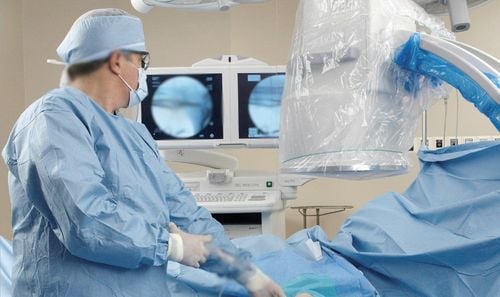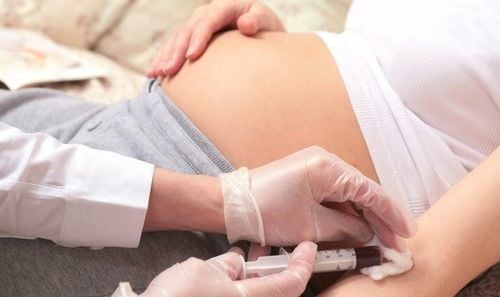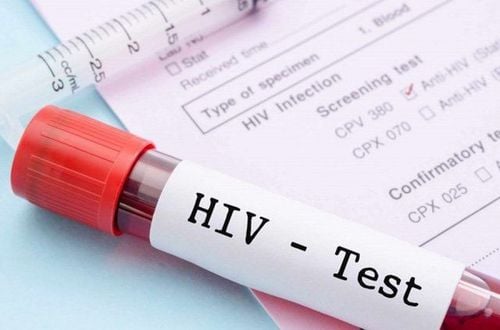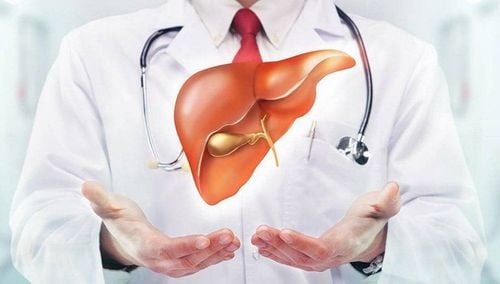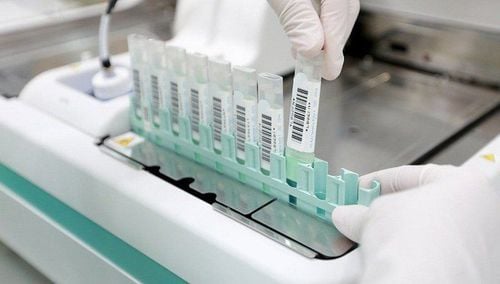This is an automatically translated article.
GBM IFT test is a quantitative test of anti-GBM antibodies (GBM AB), which is important in the diagnosis of goodpasture syndrome. So how is the GBM IFT test done?1. Significance of GBM IFT . test
The Anti-GBM ELISA test is used for the quantitative determination of IgG class anti-glomerular basement membrane (GBM) autoantibodies in human plasma or serum.Goodpasture syndrome is an autoimmune disorder of the kidneys that includes glomerulonephritis, pulmonary hemorrhage, and the formation of anti-glomerular basement membrane antibodies. This syndrome is a medical emergency, with a mortality rate of 75-90% due to respiratory failure and kidney failure if not treated promptly. Histologically, Goodpasture syndrome is characterized by persistent deposition of immunoglobulin along the glomerular basement membrane. Therefore, this syndrome can be detected by direct immunofluorescence on renal biopsy specimens - GBM IFT test. The ELISA test system uses pure antigen, has 98% sensitivity and 99% specificity.
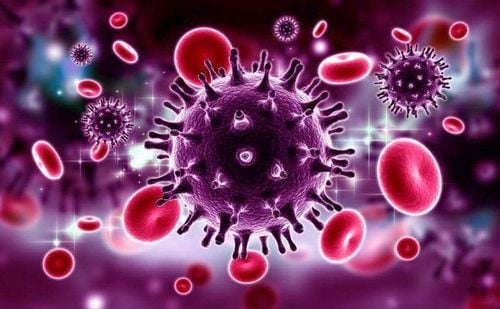
Xét nghiệm ELISA sử dụng kháng nguyên tinh khiết có độ nhạy cao
2. Principle of GBM IFT . test
The test is performed based on indirect enzyme-linked immunoreactivity through the following steps:The antibodies present in the positive sample bind to the antigen coated on the surface of 2 reaction wells, forming an antigen-antibody complex. ; After incubation, the first washing step eliminates unbound or nonspecifically bound molecules; Next, an enzyme conjugate is added, bound to the immobilized antigen-antibody complex; After incubation, a second washing step removes unbound conjugates; Enzyme substrate is added to the well, hydrolysis, coloration takes place during incubation; The intensity of the blue color produced will be proportional to the concentration of the antigen-antibody complex, which can be measured optically at 650 nm on an ELISA test system.
3. Prepare for GBM IFT . Test
3.1 Implementation personnel
1 doctor or 1 university official; 1 technician specialized in biochemistry.3.2 Technical means and chemicals
Technical means: Alegria immunoassay machine;Reagent: Anti-GBM Ab quantitative test kit: Alegria test bar consists of 8 wells containing the following components:
Well 1 + 2: An empty well for sample dilution; Well 3 + 4: As a reaction well for antigen coating; Well 5: Control, yellow, containing specific antibodies, bovine serum albumin, PBS, detergent, sodium azide preservative 0.09% and ProClin 300 0.05%; Well 6: Enzyme conjugate, light red, containing anti-human IgG antibodies bound HRP, BSA, PBS, detergent and preservative ProClin 300 0.05%; Well 7: Sample diluent, yellow, containing BSA, PBS, bleach, sodium azide preservative 0.09% and ProClin 300 0.05%; Well 8: TMB substrate, transparent, containing 3.3', 5.5'- Tetramethylbenzidine, high purity GBM has been pre-coated in the microwells, product encoding: GBM; System solutions:
Wash (1x20mL): This is a washing solution, containing detergent, TRIS and the preservative sodium azide 0.09% (50x); System Fluid (1x2.5mL): This is an acidic system solution (1000x); The test kit: Needs to be stored in the dark at 2 - 8°C. Chemicals should not be exposed to heat, sunlight or strong light during storage and use. Alegria test strips should be stored tightly closed and kept dry in a resealable bag. Wash Buffer and System Fluid after dilution will be stable for at least 30 days if stored at 2 - 8°C;
In addition, some other tools are needed such as: 1000mL and 2500mL volumetric cylinders; Vortex machine, pipette 20 μL; Deionized or distilled water.
3.3 Patients
The patient is explained and consulted by the doctor about the procedure for performing the technique before performing the test. Ideally, the patient should fast from breakfast and have blood drawn in the morning.
Người bệnh nên nhịn ăn sáng và lấy máu vào buổi sáng
3.4 Test sheet
The test sheet should contain all information about the patient, including: Full name, age, department, diagnosis, sample status, name of the appointed doctor, date and time of appointment, date and time of sampling, and drugs use (if any),...4. Carrying out the implementation technique
4.1 Sample collection and sample handling
Patient samples are taken with correct technique and put into standard test tubes. Use a non-anticoagulant tube or use a tube containing EDTA, Li-Heparin anticoagulant; Specimens received from clinical departments and sampling department. The medical staff receiving the sample will take patient information, print and paste the barcode into the sample tube and centrifuge for 4000 rpm for 5 minutes before performing the technique; Specimens can be stored at 2 - 8°C for 5 days or -20°C for 6 months; Store standards and QCs after reconstitution at -20°C. When running, it should be kept at room temperature of 20 - 25°C until completely defrosted and should be shaken well before performing the test.4.2 Technical implementation
Prepare the analyzer and reagents prior to performing the analysis. A calibrated Anti-GBM quantitative assay standard is required each time a reagent lot is changed. The operator should check that the quality is within the allowable limits. Normally, run internal control (QC) 2 levels/day: Normal level and abnormal level. Then, compared with the law on quality control, if passed, samples will be analyzed;Algeria test bar applies SMC technology used for Alegria diagnostic equipment. The steps are as follows:
Peel off the coating on empty wells 1 to 4 on the test bar, taking care not to peel off the sticker printed with barcodes, the sticker on wells 5 to 8; Aspirate 10 μL of undiluted patient sample into the bottom of well 1; Place the Algeria test strip in the SysTray tray; Place the SysTray trays in the correct position on the Alegria analyzer, and start running. The following steps will be performed automatically. The test is complete when the device starts to print results; Periodic: Recalibrate, run 2 QC levels after changing a new reagent lot or after maintaining or repairing equipment due to problems or replacing important equipment. Then, record the results on the test machine calibration results chart;
Put the specimen into analysis according to the protocol of the analyzer. When the results are available, analyze and compare them with the test sheets, save the results in the system, print the results sheets and return them to the patients on time.
5. Read GBM IFT test results
Results are normal if Anti-GBM Ab is < 20 U/mL.6. Errors and how to handle them
Use whole blood specimens collected through approved techniques to avoid erythropoiesis; Serum samples used for testing must be clear, free of broken red blood cells. The use of samples with broken red blood cells or samples contaminated with fat should be avoided. However, these samples also do not interfere with the test; Repeated freezing-thawing of serum or plasma should be avoided to avoid reduction of antibody activity; Do not perform the test with heat-inactivated serum samples. When assigned to perform GBM IFT test, the patient should coordinate with all instructions of medical staff to obtain the most accurate and fastest results.Please dial HOTLINE for more information or register for an appointment HERE. Download MyVinmec app to make appointments faster and to manage your bookings easily.




